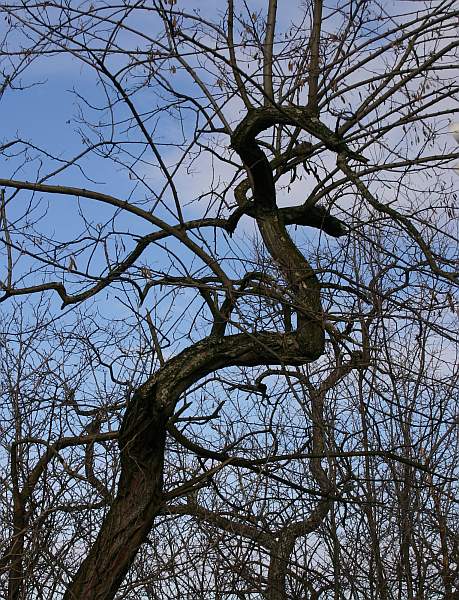
After more than a week of cold weather, the buds were not bursting in Schenley Park last Thursday as I walked around taking pictures of Spring.
Instead, I found this unopened bud that looks like a devil’s face.
It’s the bud of a black locust (Robinia pseudoacacia) a very common tree in southwestern Pennsylvania that tolerates pollution and thrives in the poor soil of old fields, disturbed woodlots and roadsides.
Though black locusts have devilish looking buds and twisted branches, they’re good trees to have around because they enrich the soil through nitrogen fixation.

Their roots have a symbiotic relationship with the Rhizobium bacteria. Rhizobium enters the root hairs, the plant makes tumor-like growths to surround it, then the bacteria takes in nitrogen and converts it into a form that fertilizes the plant. Strange but true.
Look for these devilish twigs soon. When the buds open they won’t look like faces anymore.
(photos by Kate St. John)
Interesting post Kate
Always such wonderful new “stuff” to learn. Thanks, Kate!
The circular “mouth” is the leafscar, the scar left when last year’s leaf falls off. A new leaf bud is emerging right through the old scar. Also, black locusts trees have short thorns. Honey locusts have very long 1-2″ long skinny thorns. Locusts trees are a member of the pea family. Their fruit is a pea pod just like other legumes bear, so their roots do form nodes that carry nitrogen. Thank you Kate for all your wonderful posts.
It reminds me of the face of a bat. Very interesting. I like bats.